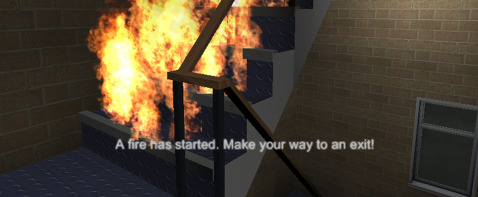Researchers use Half Life to simulate fire evacuations

People normally associate Half Life with running around after aliens or terrorists, a Glock in one hand and a grenade in the other; all in first-person shooter form.
The Half Life engine has enabled hundreds if not thousands of people to develop into and around it, providing new experiences, new games, features and maps for many. Researchers at Durham University (not my most favourite of institutions, but hats off to them anyway) have used the power of the Half Life engine to simulate real-life buildings in aiding evacuations from building fires.
While other simulation software can cost an arm and a leg, by using the Half Life software to build and model actual buildings, enables a much cheaper and viable solution, say the researchers involved.
By reconstructing their computer science department (which I've had the pleasure of visiting before, as well as been given a warm welcome </sarcasm>), the engine starts a fire somewhere within the building and it is the player's objective to get outside of the building.

"The virtual reality model was built based on Durham University’s Computer Science department consisting of three floors with a number of offices, meeting rooms and a reception. The Source engine which underlines the game Half-Life 2 was used to programme it with features such as fire alarm triggers, fire exit signs, and spreading fires.
In other studies, gaming technology has been used to build virtual environments to simulate lab accidents, teach people about cooking safety, and to help ‘treat’ people suffering from arachnophobia and claustrophobia."
The BBC reported this a few days ago, telling us the ease of use of the Half Life engine. Because no developmental skills were needed, they could complete a three-storey building with high detail in only a few weeks. Those who make maps for games which run the Half Life engine will understand this is an average time for a large map.
For those interesting in seeing a demonstration, there is a video available on the computer science webpages.